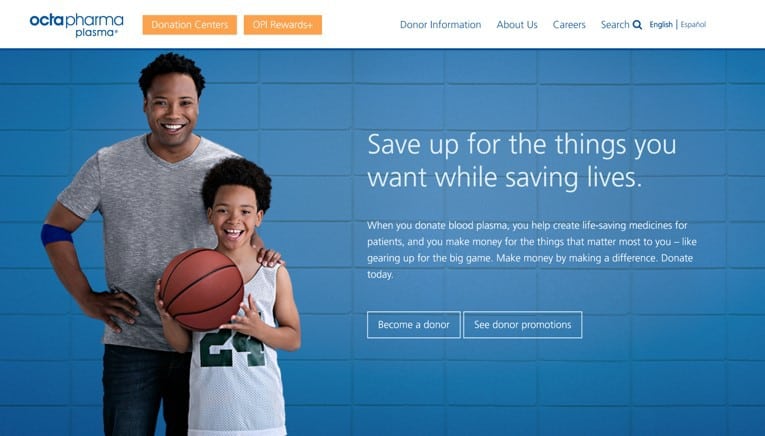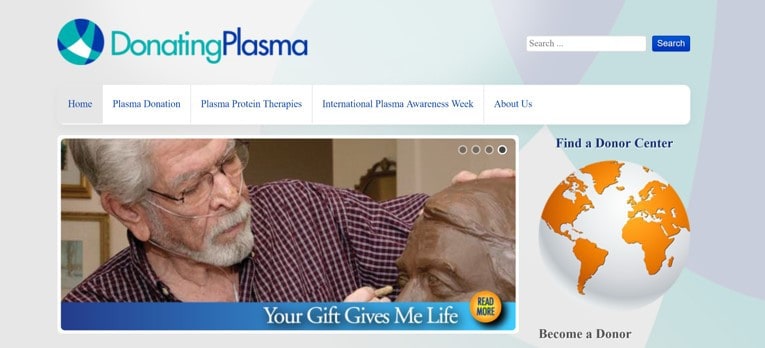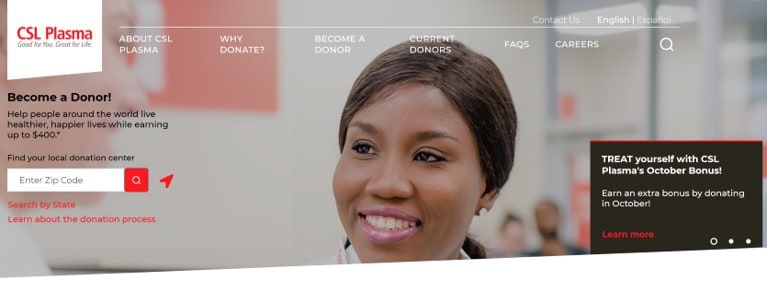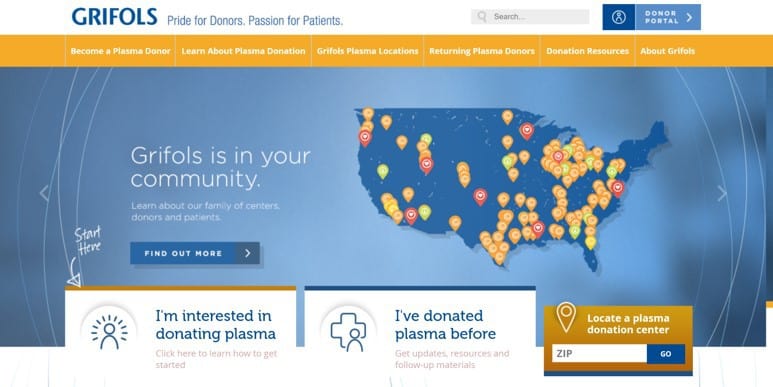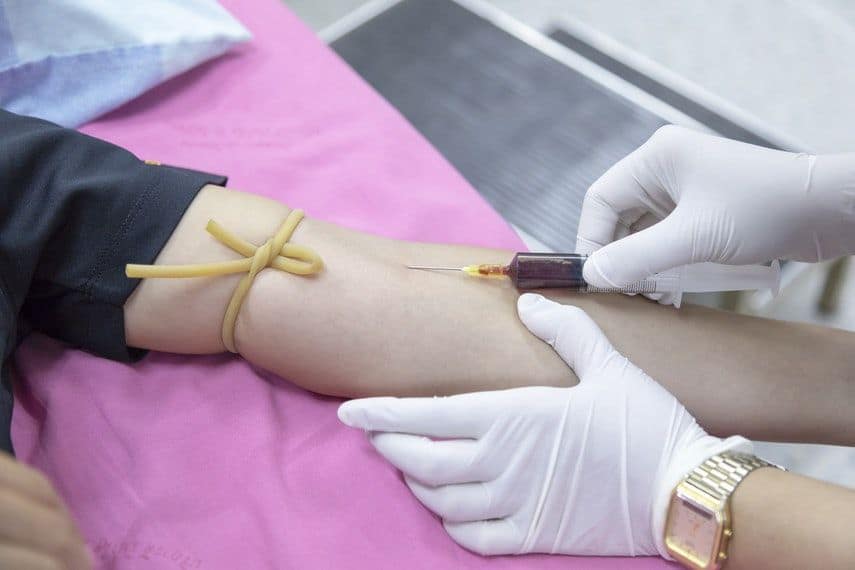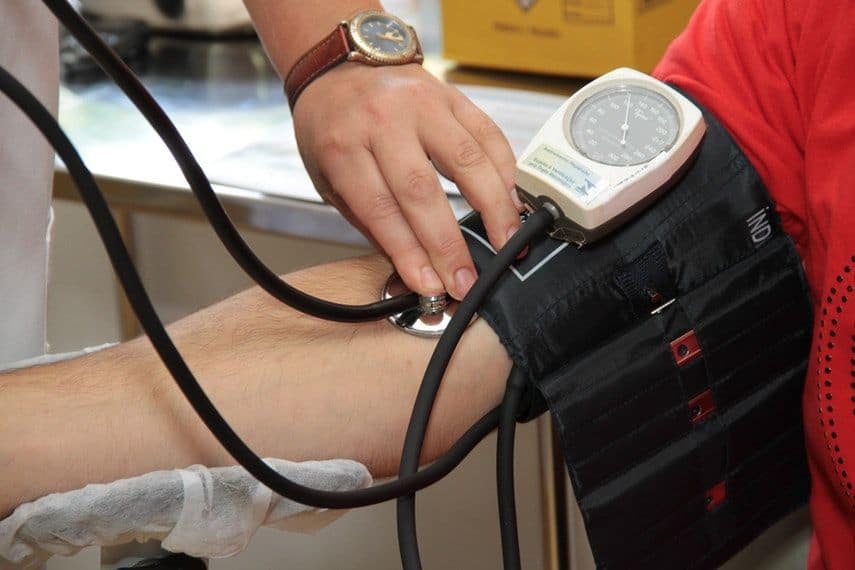How to Donate Plasma for Money (Up to $100 per Visit)
Our readers always come first
The content on DollarSprout includes links to our advertising partners. When you read our content and click on one of our partners’ links, and then decide to complete an offer — whether it’s downloading an app, opening an account, or some other action — we may earn a commission from that advertiser, at no extra cost to you.
Our ultimate goal is to educate and inform, not lure you into signing up for certain offers. Compensation from our partners may impact what products we cover and where they appear on the site, but does not have any impact on the objectivity of our reviews or advice.
Selling plasma may sound like a shady side hustle, but it's actually a legitimate way to make some extra money -- up to $100 per donation. Here's everything you need to know about how to donate plasma.
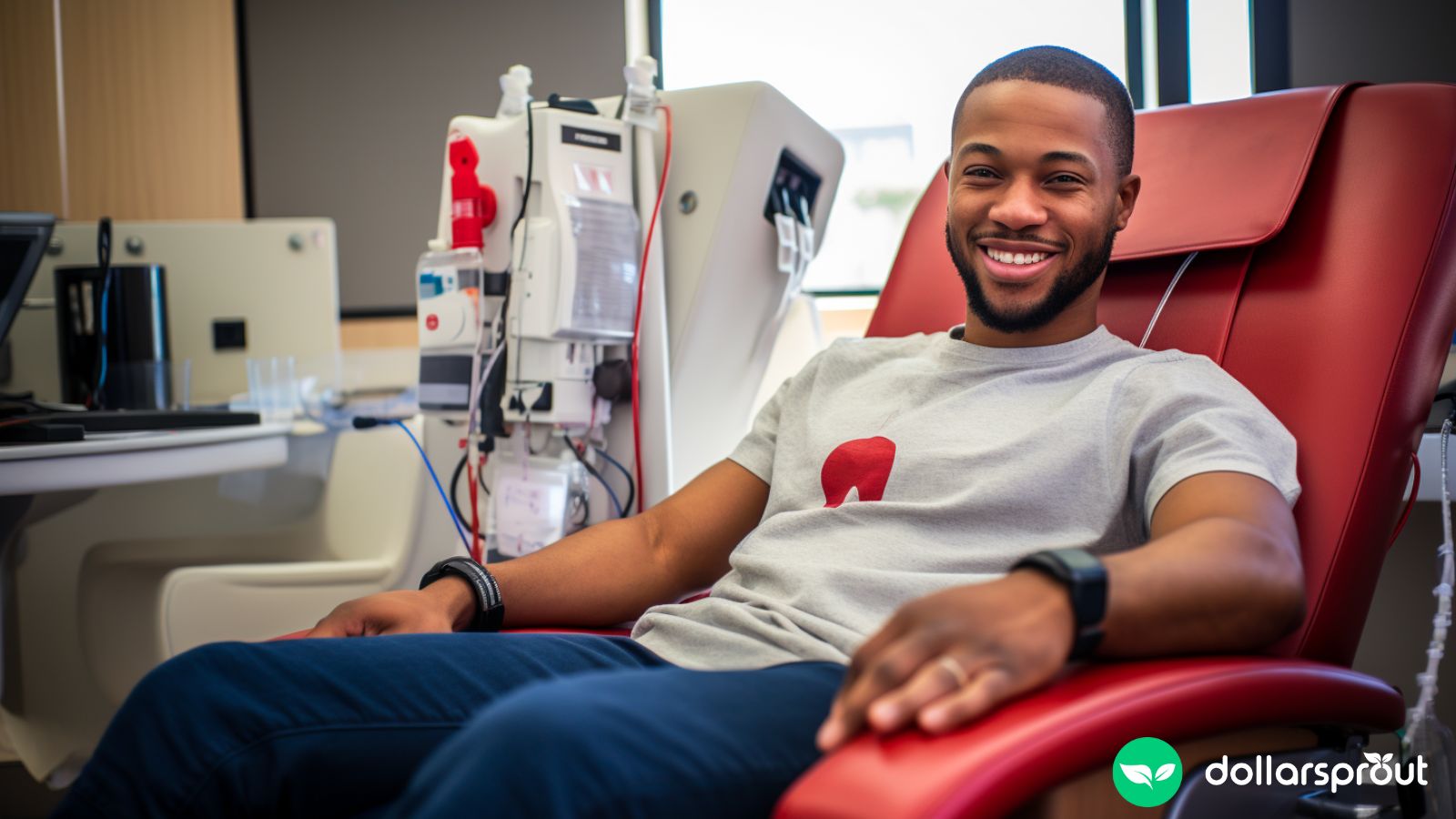
Some of the links on DollarSprout point to products or services from partners we trust. If you choose to make a purchase through one, we may earn a commission, which supports the ongoing maintenance and improvement of our site at no additional cost to you. Learn more.
Right before I graduated from college, I realized that soon, I’d be completely responsible for paying my own expenses.
I had an unpaid internship booked for the summer after graduation, and my parents made it clear I’d have to pay the rent myself.
Immediately I started thinking about ways to make more money. I was still taking a full course load, writing for the school paper, and sending out job applications. I was also spending time with my girlfriend since I wasn’t sure if we’d end up doing long-distance after college.
I didn’t have a lot of extra time on my hands, so a second job was out of the question. That’s when I discovered selling plasma.
It sounded too good to be true. You could earn up to $100 per session, do it multiple times per month, and read or be on your phone while you wait for the process to finish.
Selling plasma kept me going, financially, through that semester and summer. I didn’t make a ton of money, but it was enough to buy groceries for a week or fill my gas tank. Plus, I could make appointments around my busy schedule.
How Much Is Plasma Worth?
Every plasma center has its own payment schedule, and pay can vary even within the same chain. In general, donors can earn between $25 and $100 per visit.
If you have several plasma centers near you, call them and ask what their base rate is per repeat visit. There may be a notable discrepancy in how much they pay, which can add up over time.
All in all, refining your donation strategy can lead to big bucks. For example, this couple earned $1,500 in their first month of donating.

Additionally, new donors can sometimes be eligible for bonuses if they donate a certain amount in a certain period of time. For example, Octapharma Plasma pays an extra $400 for new donors. The requirements may vary based on location.
The FDA limits donations to two in a week and two days apart. If you donated on a Monday, you can’t donate on a Tuesday. You have to wait until Wednesday. This lets your body replenish itself with plasma.
Most plasma centers give you a prepaid card that is loaded with money after every donation visit. If you earn an extra bonus, it’ll go on the card, too. You can use the card just like a debit or credit card, both online or in person.
There’s no waiting to reach a certain minimum to cash out. If you go once, donate, and don’t come back again, you’ll still get paid. This is one reason why donating plasma can be more reliable than other side hustles. If you need money today and qualify as a donor, you can get it.
Plasma Donation Centers Near Me
You probably have several plasma donation centers near you, especially if you live in a major city. Before you start donating, see which one pays more and offers more bonuses.
You generally have to pick one location and stick with it. Some places won’t let you donate to multiple chains, so make sure you’re donating to the high-paying center near you.
Remember that every location can have its own pay rates. For example, if your cousin donates plasma in New York, they may get paid more than if you live in Alabama.
Related: 32 Flexible Ways to Make Money in College
1. Octapharma Plasma
Octapharma Plasma is one of the most prominent plasma donation chains with locations in all parts of the country, including the South, Midwest, Northeast, and West. Whether you live in Arizona or Arkansas, you might have an Octapharma Plasma near you.
2. DonatingPlasma
DonatingPlasma compiles plasma donation centers from around the world. Most of their U.S.-based locations focus on the Midwest, South, and East Coast, although there are locations in the West.
3. CSL Plasma
CSL Plasma is another major plasma bank center with locations in states like California, Illinois, Texas, and Rhode Island. CSL claims you can earn $400 a month with them.
4. Grifols Plasma
Grifols Plasma has many plasma centers in states like Georgia, Utah, Virginia and more. Some locations offer a referral bonus if you bring a friend who then successfully donates.
Related: One Expert’s Advice on Why Weird Side Hustles Work (and How to Find One)
Plasma Donation Requirements: How to Qualify to Sell Plasma
Think of donating plasma as a job interview, and one that you’ll repeat every time you go in.
For instance, each time you go to donate, they’ll test your protein levels and will ask you to fill out a short medical questionnaire. Just because you qualified last week doesn’t guarantee you’ll be eligible this week.
Age requirements
You have to be at least 18 years old to donate plasma. If you’re healthy and have a car, this may be an easy way to make money because you can bring a book or tablet with you while you wait.
Each facility can make its own rules, and some limit how old you can be to sell plasma. Some may cap it at 69 years old. If you’re a senior, call before going to a plasma center.
What to bring
The first appointment is the most intense. You’ll need to bring:
- A form of photo ID
- Proof of Social Security Number
- Proof of current address
For every appointment, make sure to bring your ID to verify your identity. You should also dress warmly because the donation rooms are often cold. Some people bring blankets or wear layers.
Because the process takes between 60 to 90 minutes, it’s good to bring a book, phone, tablet or even a laptop. I used to bring in my laptop to do homework while I waited. It can be distracting to do work, but watching a movie or listening to a podcast is doable.
If you get lightheaded after donating plasma, bring a light snack like orange juice or almonds to eat before you go home.
Body type requirements
People need to weigh at least 110 pounds to qualify for plasma donation. If you weigh less, your body may have a bad reaction. Some centers may pay people differently based on their weight.
Medical history
Plasma centers have a rigorous health testing system. Before you donate, you’ll have to fill out a complete medical history and have your blood tested.
Most plasma banks test for syphilis, hepatitis A, B, and C, and HIV. This ensures the plasma isn’t contaminated before it goes off to its final location.
Diet
People who donate or sell plasma should have a good diet because that can affect their protein levels. If you already eat protein a couple of times a day, your levels will probably be fine. People who exercise regularly may want to up their protein intake.
But if you don’t get enough, consider adding in some eggs, chicken, or other lean protein sources to your diet. Protein powder usually contains 25 grams of protein per scoop, making it an easy and affordable way to increase your protein without eating a big steak.
Related: How One Woman Earns $5,000 per Month as a Surrogate Mother
How to Prepare for Selling Plasma
Even though selling plasma is an easy side hustle, there are steps to take to ensure you’ll be approved to donate.
Get a good night’s sleep
How much you sleep can affect your plasma totals. Having healthy, regular sleep patterns increases the chance that your levels will be good enough for plasma donation.
Drink extra water before the appointment
Giving plasma has a dehydrating effect on the body, so drinking water before the appointment can ensure you don’t feel bad after you leave.
Eat a well-balanced meal first
Eating beforehand can help you avoid feeling too dizzy after you donate. Stick to something filling and on the healthy side.
Side Effects of Donating Plasma
Donating plasma is incredibly safe, but there are some mild side effects to be aware of.
Allergic reactions
In very rare cases, people may get an allergic reaction from donating plasma. In most of these instances, the reaction is just some redness or mild itching. Most people don’t know if they’re allergic until they donate.
Citrate reactions
A more serious side effect after plasma donation is a citrate reaction. This can result in some mild symptoms like tingling or a metallic taste, but in very rare cases it can lead to vomiting or even cardiac arrest. Since it’s so rare, most people don’t need to worry about having a citrate reaction.
Lightheadedness
Getting dizzy or lightheaded after donating plasma is a normal side effect. Plasma is full of necessary nutrients so giving away plasma may result in feeling off. If you feel woozy, take a few minutes in the waiting room to recoup before driving home.
Dehydration
Plasma holds water so after you donate, you may end up a little dehydrated. When I used to donate, I tried to drink extra water that day. If you drink alcohol, your tolerance may be lower as well, so try not to drink on the day you donate.
Can You Really Make Money Selling Plasma?
Even though it’s a pretty weird gig, you can actually make money selling plasma at a plasma bank near you. How much you earn depends on how often you go and if the donation center offers any special bonuses.
However, be prepared for this side gig to end suddenly, especially if your health deteriorates and you’re no longer eligible to donate. That’s what happened to me.
I was donating plasma regularly and then my iron levels dropped too low. I wasn’t anemic, but the plasma center said I couldn’t sell my plasma anymore. That’s why it’s important to stay hydrated, watch your diet, and not donate too often.
Related: 38 Easy Ways to Make Money Fast


